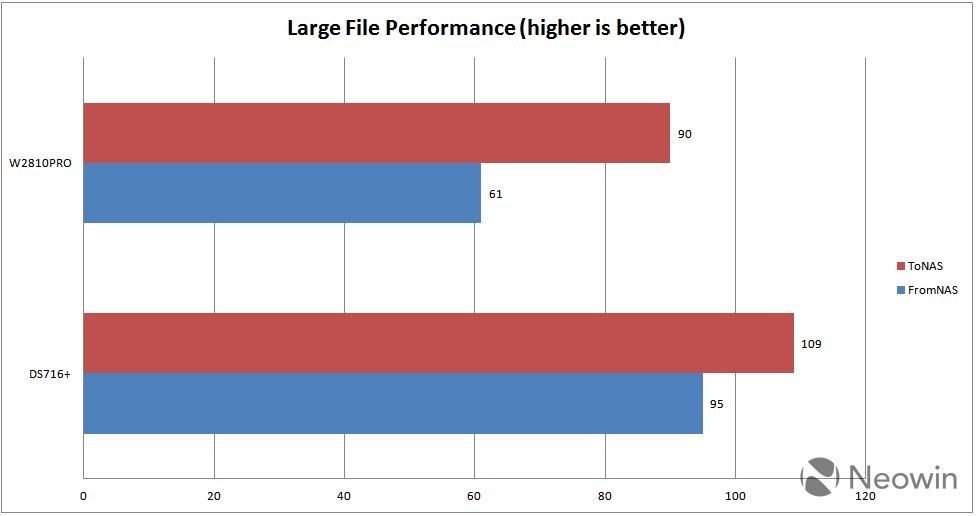 The market for devices that allow you to control your own data is hot right now. Sure, the available-anywhere cloud (aka: Internet) is an extremely convenient place to store your files, but for many people , the idea that a third party has access to your data and is responsible for its security just doesn’t sit well. In other cases, there may be data that you don’t want available on the Internet at all ( just ask Jennifer Lawrence ).
The market for devices that allow you to control your own data is hot right now. Sure, the available-anywhere cloud (aka: Internet) is an extremely convenient place to store your files, but for many people , the idea that a third party has access to your data and is responsible for its security just doesn’t sit well. In other cases, there may be data that you don’t want available on the Internet at all ( just ask Jennifer Lawrence ).
In the past, we’ve looked at various NAS devices that have their own custom-tailored operating systems. While we find these extremely convenient, many people lament the fact that they can’t put a «real» operating system on the device. In addition, because the vendors opt for ease of use, power users are occasionally frustrated because they can’t do everything they want.
Then there’s the case where the NAS vendor is great at hardware but just can’t seem to make the custom OS easy to use. That was definitely the case when I looked at the Thecus N7710-G , a device with 10Gb/sec speed, but a terrible user interface. So what did Thecus do to help remedy the situation? They released the W2810PRO, a product that uses Microsoft’s Windows Storage Server 2012 R2 Essentials (just rolls off the tongue) as the OS.
For those who may not have heard, Essentials is the replacement for Windows Home Server, and is basically a slightly scaled-down version of Windows Server made specifically for OEMs to use on NAS devices. It’s clear from the box that Thecus is hyping up the Microsoft relation, highlighting the features of the OS and the ease of connecting to Office 365 and Microsoft Azure. The color scheme even seems like something Microsoft would release.
So how does it stack up? Let’s take a look.
The Thecus W2810PRO sports some pretty good specs at a reasonable price. It’s powered by the quad-core Intel Celeron N3160 processor and has 4GB of DDR3 RAM. While technically not upgradable, there’s nothing stopping you from opening the box and putting in an 8GB memory stick. Unfortunately, there is only one slot in the device so you won’t be able to obtain dual channel memory performance.
On the back of the device are two Gigabit Ethernet ports, two USB3 ports, the power connector, and a Kensington lock. What’s a little more unique are the video options: You can connect the W2810PRO up to a display via either HDMI or DisplayPort. There’s also an SPDIF connection if you want to connect the device up to an audio receiver to use as part of a media center.
The front of the device has a power button, a «quick copy» button, and a single USB3 port. There are two hot-swappable SATA drive bays that can be locked.
What’s unique among NAS devices is that the W2810PRO has an embedded 60GB SSD drive that holds the operating system. This lets you replace all of your drives at once without having to worry about reinstalling the base OS and reconfiguring the device. It also means the NAS device boots up extremely quickly. The base install of Storage Server 2012 R2 Essentials takes up about half of the space, leaving you plenty of extra disk capacity.
2 x Gigabit Ethernet
Without SATA drives, the W2810PRO costs roughly $400, including the Windows license.
While most NAS devices have a straight-forward installation process, using Windows Storage Server as the base OS complicates the installation slightly. The setup requires you to connect the Thecus W2810PRO to a video display using either HDMI or DP, then connect a keyboard and a mouse to the USB ports. After that, simply plug in an Ethernet cable and the power, and you’re ready to go.
One of the biggest improvements from previous Thecus devices I’ve reviewed is that the drive bays are now completely tool-less. Simply put the drive in the sled, click the plastic sides into place, and slide it into the bay. There are holes on the bottom for screws if you want some extra protection, but I didn’t find they were necessary.
Because the W2810PRO has an embedded SSD, you don’t have to connect hard drives to the system beforehand and I actually recommend leaving them out during the initial install as I had some issues when I plugged the SATA drives in first. While I’m not 100% sure, I think it was due to the fact that they were formatted with data from another NAS device, and that may have been confusing the Windows installer.
As noted above, initial setup of the Thecus W2810PRO requires not only a video display but also a keyboard and mouse. Previous Thecus devices, as well as those offered by Synology and QNAP, allow a headless configuration, which makes things much easier for users. This is one of the tradeoffs you have to accept when using Windows Storage Server as opposed to a custom-built OS.
Домой
United States
USA — software Thecus W2810PRO review, a NAS device running Windows Storage Server 2012 R2...






